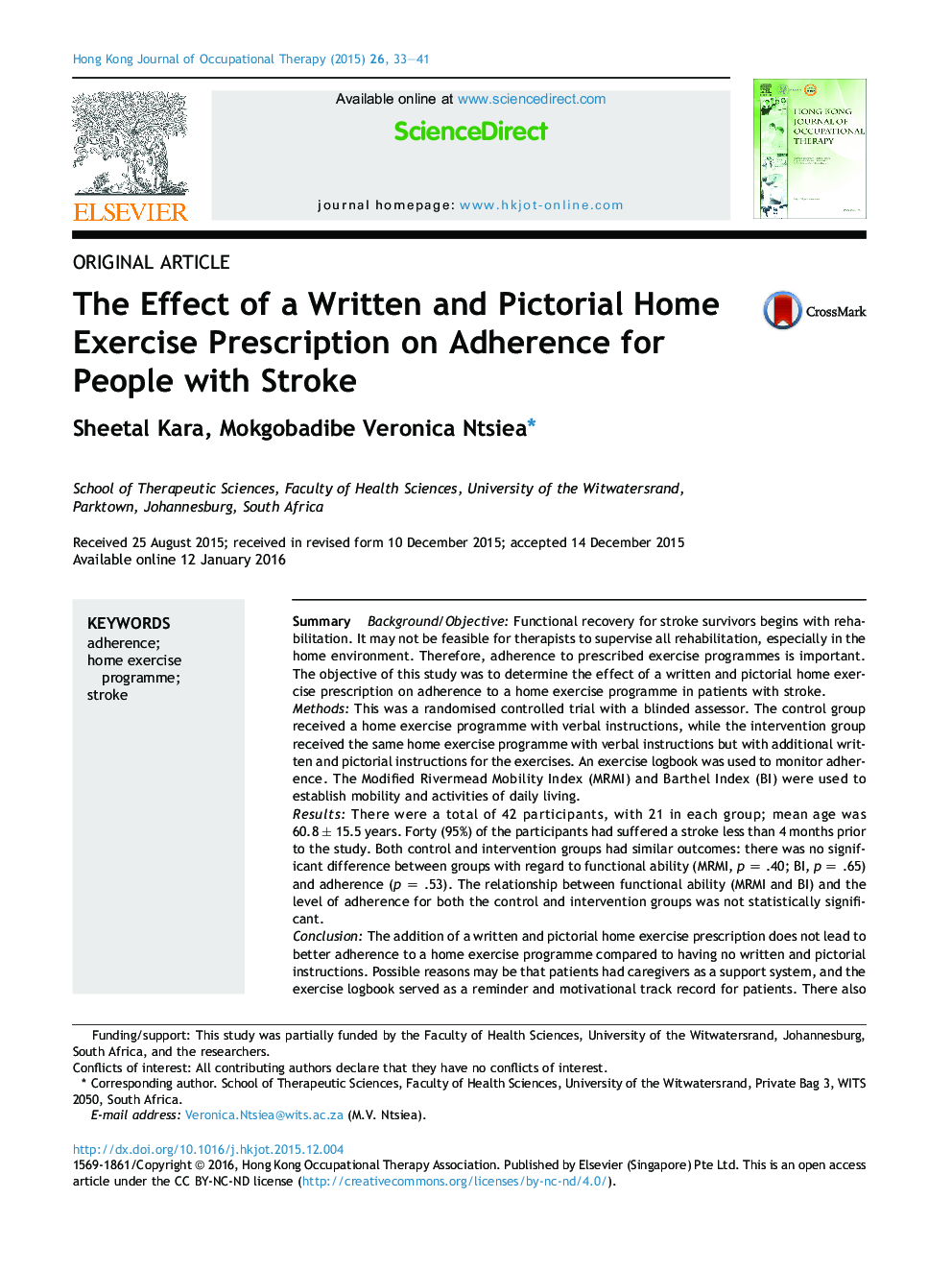| Article ID | Journal | Published Year | Pages | File Type |
|---|---|---|---|---|
| 2690477 | Hong Kong Journal of Occupational Therapy | 2015 | 9 Pages |
SummaryBackground/ObjectiveFunctional recovery for stroke survivors begins with rehabilitation. It may not be feasible for therapists to supervise all rehabilitation, especially in the home environment. Therefore, adherence to prescribed exercise programmes is important. The objective of this study was to determine the effect of a written and pictorial home exercise prescription on adherence to a home exercise programme in patients with stroke.MethodsThis was a randomised controlled trial with a blinded assessor. The control group received a home exercise programme with verbal instructions, while the intervention group received the same home exercise programme with verbal instructions but with additional written and pictorial instructions for the exercises. An exercise logbook was used to monitor adherence. The Modified Rivermead Mobility Index (MRMI) and Barthel Index (BI) were used to establish mobility and activities of daily living.ResultsThere were a total of 42 participants, with 21 in each group; mean age was 60.8 ± 15.5 years. Forty (95%) of the participants had suffered a stroke less than 4 months prior to the study. Both control and intervention groups had similar outcomes: there was no significant difference between groups with regard to functional ability (MRMI, p = .40; BI, p = .65) and adherence (p = .53). The relationship between functional ability (MRMI and BI) and the level of adherence for both the control and intervention groups was not statistically significant.ConclusionThe addition of a written and pictorial home exercise prescription does not lead to better adherence to a home exercise programme compared to having no written and pictorial instructions. Possible reasons may be that patients had caregivers as a support system, and the exercise logbook served as a reminder and motivational track record for patients. There also does not appear to be a relationship between functional ability and level of adherence, which may be due to most of the study participants being within the optimal time frame for spontaneous functional recovery. Further study at different time frames in stroke rehabilitation in different contexts is recommended.
